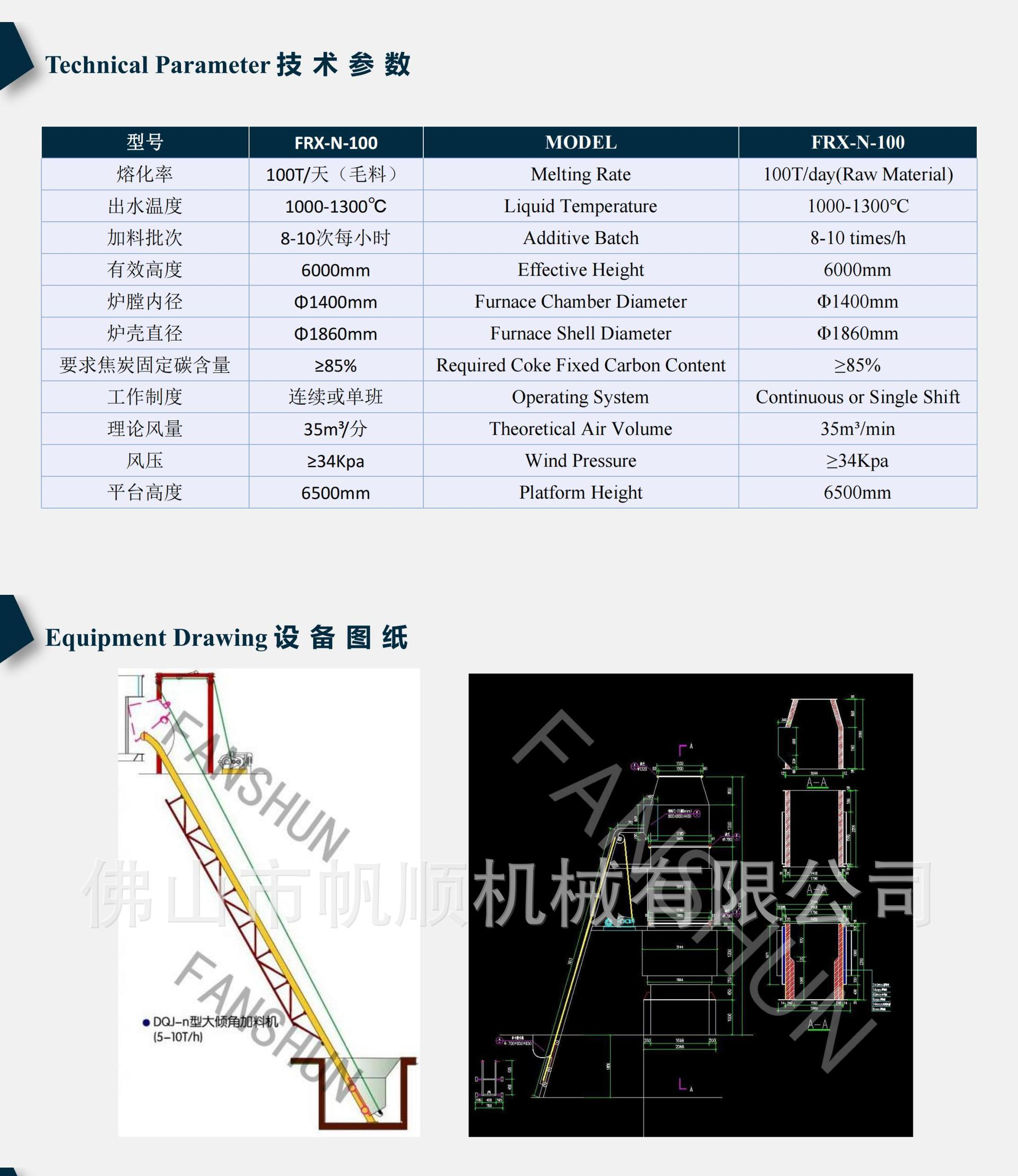A cupola furnace is a melting device commonly used in foundries for melting cast iron, bronze, and other metals. Here are the key characteristics of a cupola furnace:

1. Structure
The cupola furnace is a vertical cylindrical structure made of steel plates with a refractory lining to withstand high temperatures.
It typically has several zones, including the well (bottom part), the combustion zone, the melting zone, and the stack (upper part).
A charging door is present on the side for adding metal, coke, and flux.
2. Operation
The melting furnace operates by loading layers of metal, coke (fuel), and flux (such as limestone) from the top.
As the coke burns in the combustion zone, it generates the high temperatures required to melt the metal above it.
The air supply for combustion is provided by a series of tuyeres (nozzles) located around the lower part of the melting furnace.
3. High Melting Efficiency
The cupola furnace is known for its ability to achieve high melting efficiency. It can rapidly melt large quantities of metal.
The melting furnace can maintain continuous melting for long periods, making it suitable for large-scale foundries.
4. Temperature Control
The temperature inside a cupola furnace can reach up to 1,500–1,600°C (2,732–2,912°F), depending on the material being melted and the type of fuel used.
The temperature is controlled by adjusting the air blast and the ratio of coke to metal.
5. Cost-Effective Operation
Cupola furnaces are relatively cost-effective compared to other melting methods. They use coke as fuel, which is less expensive than electric power.
The melting furnace design allows for easy addition of raw materials and slag removal, enhancing productivity.
6. Application Areas
Commonly used for melting cast iron, bronze, and sometimes steel.
Widely used in foundries for producing castings for automotive, construction, and industrial machinery sectors.
7. Flexibility and Adaptability
Cupola furnaces can be adapted to different melting conditions and metal types by varying the charge materials, fuel, and flux.
They can be used to recycle scrap metal, making them environmentally and economically beneficial.
8. Environmental Considerations
Emissions from cupola furnaces (such as CO2, SOx, and particulate matter) must be managed with proper exhaust and filtration systems to meet environmental regulations.
Overall, the cupola furnace is valued for its efficiency, adaptability, and cost-effectiveness in melting ferrous and non-ferrous metals for a wide range of applications.

